Iglesia de San Miguel Arcángel
Es el principal monumento de Larraga y solo se abre durante el horario de culto. Arquitectónicamente, el conjunto se compone de varios estilos artísticos. Los más antiguos, románico-góticos, se encuentran en la entrada del templo y llegan hasta las columnas del interior. Este primitivo templo se amplió durante los siglos XVI y XVII con un nuevo crucero y una nueva cabecera, destacando dos enormes columnas en el primero y las trompas y el cuarto de esfera que cubren la capilla mayor en la segunda. Al ser una de las tres construcciones plenamente clasicistas del momento, esta ampliación esta considerada como una de las mejores obras arquitectónicas del renacimiento navarro. Esta característica fue motivada por la intervención de Juan de Villarreal, uno de los precursores del renacimiento en Navarra. Posteriormente, en el siglo XVIII se erigió la torre barroca en el exterior siguiendo el modelo de la de Santo Domingo de la Calzada, y en el siglo XIX se construyó una sacristía neoclásica en el interior.
En cuanto a los bienes muebles, en primer lugar cabría mencionar el órgano de Diego Gómez, con un teclado barroco y otro romántico de los que destaca el registro de la corneta de mano derecha. Tiene una monumental fachada-retablo y figura como uno de los mejores de Navarra. El retablo mayor es una obra barroca que está declarada Bien de Interés Cultural (BIC). Su titular es San Miguel y el autor es el arquitecto Fermín de Larrainzar. Otro de los retablos destacados es el de la Virgen del Rosario (BIC), barroco. Esta situado a la izquierda del retablo mayor y destaca por su rica decoración de follajes y flores, muy fina y de cuidada ejecución, así como por la virgen titular, de comienzos del siglo XVI. El Santo Cristo del Socorro se encuentra en la entrada del templo y es uno de los escasos crucificados que quedan del románico navarro (siglos XII-XIII). Se le tiene una gran devoción en Larraga y por ello es copatrón de la misma, siendo su fiesta el 3 de mayo. Está declarado BIC, al igual que la pila bautismal, la cual se labró conforme se ejecutaba la ampliación renacentista (siglo XVI).







